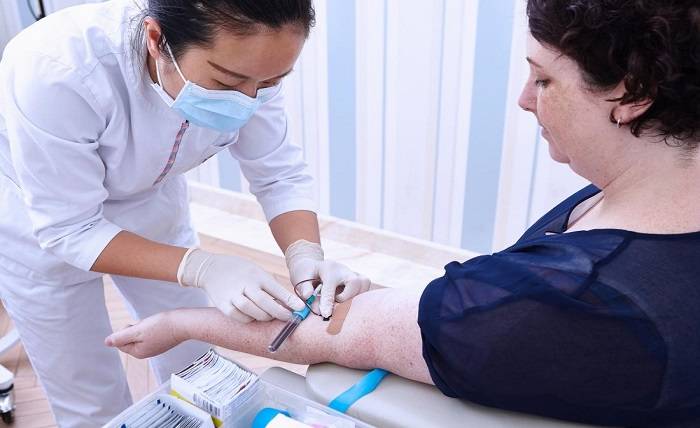Absolute eosinophil count (AEC) measures the number of eosinophils in the blood. They can become active during illness or chronic conditions, and a high AEC indicates an excess of these cells. Listed below are some symptoms and the recommended treatment. In order to determine the cause of an elevated AEC, you should see a doctor. If you are concerned about your AEC, ask your doctor for a blood test.
How to Get Ready for the Test:
Adults typically don’t need to do anything particular in order to prepare for this test. Include over-the-counter medications in your list of medications to your healthcare physician. The test findings may be altered by some medicines.
The following medications could result in an increase in eosinophils:
- Amphetamines (appetite suppressants) (appetite suppressants)
- Several psyllium-containing laxatives
- a few antibiotics
- Interferon \sTranquilizers
The procedure for an AEC essentially involves drawing a small amount of blood from a vein in an arm. An antiseptic fluid will be used on the site, and a tourniquet will be applied. The lab technician will then draw a small sample of blood, and place it in a test tube or glass slide for analysis. Your doctor may ask you to give a list of medications that you take. If you’ve had any recent medical conditions, tell your doctor about them.
An analysis of a large number of patients with eosinophilia performed by Epic, Verona, WI, identified individuals with a single AEC. These individuals were probably treated for severe hypereosinophilia or seen for a second opinion. The study was limited by its small sample size, and was conducted at a single tertiary medical center. Additionally, the definition of a normal AEC requires a follow-up AEC to confirm a diagnosis of persistent hypereosinophilia.
While elevated eosinophil counts can be a warning sign of a serious disease, it is not a cause for panic. An elevated eosinophil count is a signal that your immune system is not responding to normal levels. This is because eosinophils do not have the proper capacity to produce antibodies that can fight off an infection. In addition, a high eosinophil count may also be a sign that a disease is on its way to spread throughout your body.
When you’ve got an eosinophilia attack, your white blood cells will increase in number. This type of white blood cell is useful in diagnosing diseases, like acute hypereosinophilic syndrome (AHS), allergies, and early Cushing’s disease. It can also signal a parasite infection or allergic reaction. High eosinophil counts can also indicate a cancerous condition.
The cause of hypereosinophilia, or HE, is not yet clear. Although the prevalence of this condition is similar in adults and children, different factors can trigger it. Certain hematologic malignancies are more common in children than in adults. The frequency of other eosinophilic disorders is lower in children. In a retrospective study, 37 children with hypereosinophilia were included.
The cause of an elevated AEC in a refugee is not known for sure, but elevated eosinophil counts are typically a sign of a tissue-invasive parasite infection. The absence of eosinophilia does not rule out parasitic infection, but it is also important to remember that a human host does not always mount an eosinophilic response to non-tissue-invasive protozoa.
Risks
Blood draw risks are minimal, although they could include:
- A lot of blood
- Fainting or experiencing dizziness
- Hematoma (blood accumulating under the skin) (blood accumulating under the skin)
- Infection (a minor possibility any time the skin is broken) (a slight risk any time the skin is broken)
Eosinophilia is a condition in which the body’s immune system releases too much eosinophils. In patients with a normal eosinophilia, the number of eosinophils is around 30 to 350. Nonetheless, this number is not always accurate, and it can sometimes be inaccurate. Fortunately, there are several tests that can diagnose eosinophilia and help you identify a cure for it.

